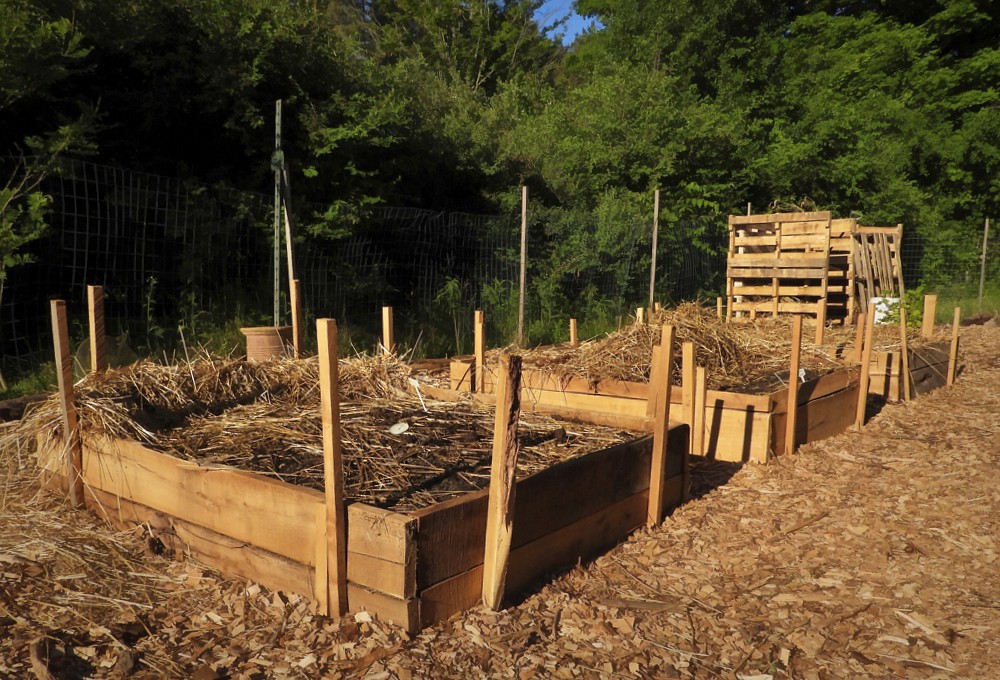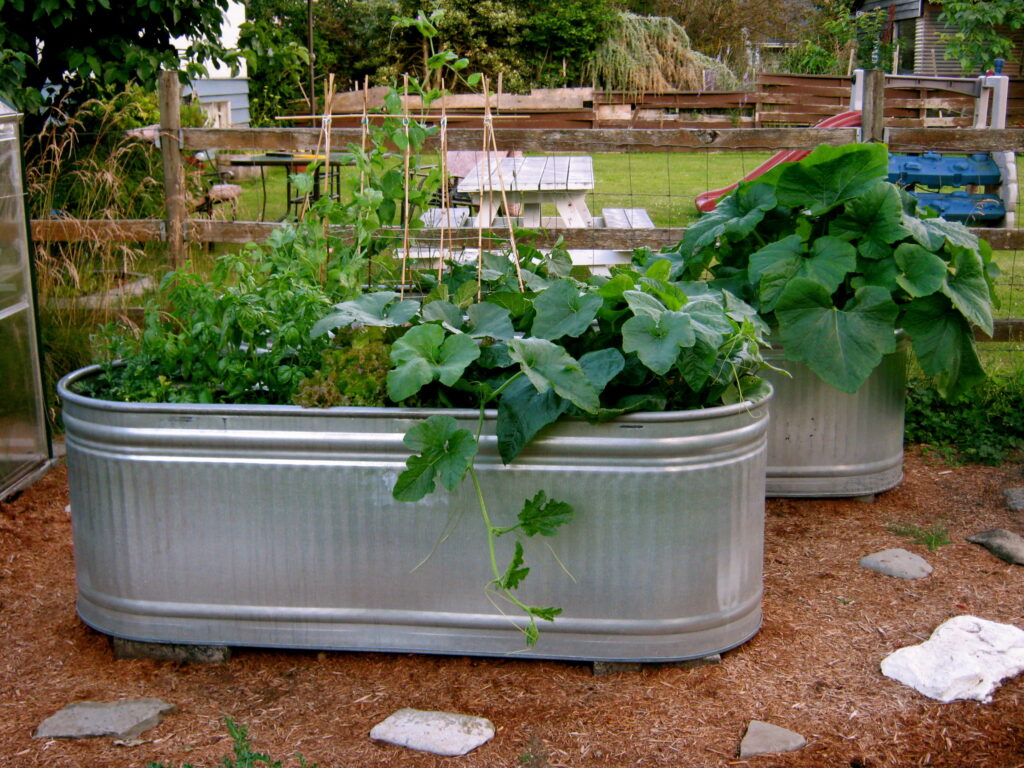Raised bed gardening is a popular and effective way to grow plants, vegetables, and herbs in a contained space. By creating a raised bed, you can control the soil quality, drainage, and even the temperature to create an optimal growing environment for your plants. In this blog, we’ll explore the various ways you can garden with raised beds, from the different types of materials you can use to build them, to the best plants to grow in raised beds, and how to maintain them throughout the growing season. Whether you’re a seasoned gardener or a beginner, this blog will provide you with all the information you need to start your own raised bed garden and enjoy a bountiful harvest.

Types of Raised Beds
There are many different types of raised beds, each with its own advantages and disadvantages. Wooden raised beds are a popular option due to their natural look, affordability, and ease of customization. Metal raised beds, including galvanized steel, aluminum, and copper, are also durable and long-lasting, and can add an industrial or rustic look to your garden. Stone and concrete raised beds can be a permanent addition to your garden and provide a natural, organic look. Additionally, plastic raised beds are a lightweight and affordable option that are easy to move around and are safe for growing edible plants. By considering the benefits and drawbacks of each type of raised bed, you can choose the best option for your garden and start growing your own fresh produce in no time!
Here is a brief breakdown on the various types of raised beds:
- Wooden raised beds: These are the most popular type of raised beds and are made of wood boards or planks that are stacked on top of each other and held together with screws or nails.
- Concrete block raised beds: These are made by stacking concrete blocks on top of each other, which creates a sturdy and durable raised bed.
- Cinder block raised beds: Similar to concrete blocks, cinder blocks can be used to create a raised bed. They are more affordable but may not last as long as concrete blocks.
- Brick raised beds: These are made by stacking bricks on top of each other, which creates a decorative and long-lasting raised bed.
- Metal raised beds: These are made from materials such as steel, aluminum, or galvanized metal, and are very durable.
- Stone raised beds: These are made of stacked stones, which creates a natural and rustic look.
- Plastic raised beds: These are made from high-density polyethylene (HDPE) and are lightweight, durable, and easy to assemble.
How to Build a Wooden Raised Bed

Building a raised bed from wood is a relatively simple project that can be completed in a few hours. Here are the steps:
Materials:
- 2×6 or 2×8 pressure-treated lumber (or untreated cedar or redwood if you prefer a natural look)
- Galvanized screws or nails
- Wood stakes (optional)
- Landscape fabric (optional)
- Soil
Tools:
- Saw
- Drill
- Measuring tape
- Level
Steps:
- Choose a location for your raised bed and measure out the dimensions. A common size for a raised bed is 4 feet wide by 8 feet long, but you can adjust the size to fit your needs.
- Cut the lumber to size using a saw.
- Lay out the boards on a flat surface, with the ends butted together to form a rectangle.
- Drill pilot holes through the boards at each corner, then screw or nail them together.
- To reinforce the corners, you can add wood stakes at each corner. Attach them to the inside of the raised bed, driving them into the ground to keep the bed stable.
- If desired, you can line the bottom of the bed with landscape fabric to prevent weeds from growing up into the soil.
- Fill the bed with soil, leaving about an inch of space at the top.
- Level the soil and water it well before planting.
Creating Concrete or Brick Raised Beds

Creating a raised bed with concrete blocks, cinder blocks, or bricks is a simple and straightforward project that requires minimal tools and materials. Here are the steps:
Materials:
- Concrete blocks, cinder blocks, or bricks
- Landscape fabric or cardboard (optional)
- Soil
Tools:
- Level
- Measuring tape
Steps:
- Choose a location for your raised bed and measure out the dimensions. A common size for a raised bed is 4 feet wide by 8 feet long, but you can adjust the size to fit your needs.
- Lay out the blocks or bricks in the desired pattern to form a rectangular or square shape. Ensure that the blocks are level and even.
- If desired, you can line the bottom of the bed with landscape fabric or cardboard to prevent weeds from growing up into the soil.
- Fill the bed with soil, leaving about an inch of space at the top.
- Level the soil and water it well before planting.
Note: If you are using concrete or cinder blocks, it is important to use blocks that are designed for use in landscaping and gardening, as some blocks may contain harmful chemicals that can leach into the soil.
Types of Metal Raised Beds

When it comes to metal raised beds, there are a few options to choose from, each with its own pros and cons. Here are some of the most common types and their benefits:
- Galvanized steel raised beds: These are made of steel that has been coated with zinc to prevent rust and corrosion. They are durable, long-lasting, and can withstand harsh weather conditions.
- Aluminum raised beds: These are lightweight, rust-resistant, and can last for many years. They are easy to move around and are a great option if you want to create a portable garden.
- Corrugated metal raised beds: These are made of steel that has been shaped into corrugated sheets. They are durable and can be very attractive, adding an industrial or rustic look to your garden.
- Copper raised beds: These are beautiful and durable, and they have natural antimicrobial properties that can help prevent the growth of bacteria and fungi in the soil. However, they can be expensive and may not be practical for larger gardens.
When choosing a metal raised bed, it’s important to consider your budget, the size of your garden, and the look you want to achieve. Galvanized steel and aluminum are the most popular options due to their durability and affordability, but corrugated metal and copper can be great choices if you want a more unique look or are willing to invest a bit more money.
Plastic Raised Beds
Plastic raised beds can be a great option for a variety of reasons. Here are some situations when it might be a good idea to make a raised bed out of plastic:
- Portability: Plastic raised beds are lightweight and easy to move around, which makes them a good choice if you need to rearrange your garden or if you are renting your home and don’t want to create a permanent garden.
- Affordability: Plastic raised beds are typically less expensive than other types of raised beds, such as wood or metal, which makes them a good choice if you are on a tight budget.
- Durability: High-density polyethylene (HDPE), which is the most common material used for plastic raised beds, is durable and can last for many years. It is also resistant to rot, rust, and corrosion.
- Safety: Plastic raised beds do not contain any chemicals that can leach into the soil, which makes them a safe option for growing vegetables and other edible plants.
- Ease of assembly: Plastic raised beds are easy to assemble and do not require any special tools or skills.
However, it’s important to note that plastic raised beds may not be as aesthetically pleasing as other types of raised beds, such as wood or brick, and may not last as long as more durable materials like metal or stone. Additionally, plastic raised beds may not provide as much insulation as other materials, which can make them less ideal for cold climates.
In conclusion, raised bed gardening is a versatile and effective way to grow plants, vegetables, and herbs in a contained space. By choosing the right materials and following some simple tips and tricks, you can create a healthy, thriving garden that provides you with fresh produce year-round. Whether you prefer the natural look of wood, the durability of metal, the classic elegance of stone, or the affordability of plastic, there is a type of raised bed that will suit your needs and preferences. We hope this blog has provided you with valuable information and inspiration to start your own raised bed garden and enjoy the many benefits of homegrown produce.
Are you planting in raised beds? Share some photos of the kinds of raised beds you have in our gardening community. At Garden Savvy we have the only gardening social media platform. Dig in and start talking gardening with other gardeners!

Contact Author
 info@gardensavvy.com
info@gardensavvy.com Recent Posts
- Smart Gardening: How Technology Is Revolutionizing Horticulture
- Understanding Gardening Zones: What You Need to Know
- The Right Tools For Your Gardening And Landscaping Needs
- Maximizing Your Harvest: Square Foot Gardening Chart for Beginners
- Holiday Garden Scents: Plants for Natural Aromatherapy in Your Home









